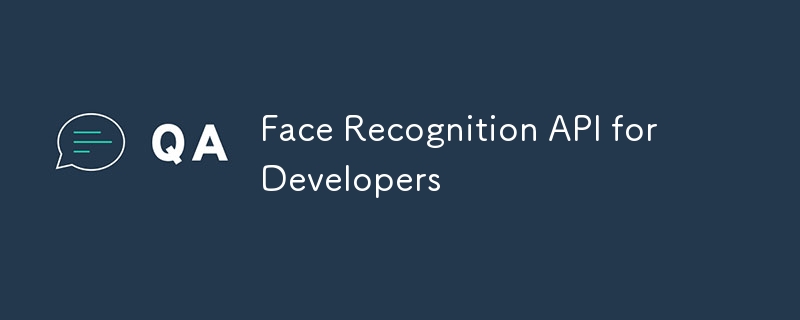
Selecting the right face recognition API is a critical step for developers aiming to incorporate facial recognition features into their applications. With numerous options available, making an informed decision requires careful consideration of various factors, from technical capabilities to cost and licensing.
When choosing a face recognition API, developers should begin by identifying their specific needs. Key criteria to evaluate include accuracy, speed, and the range of features offered by the API. For instance, some APIs excel in detecting and recognizing faces in diverse lighting conditions, while others might offer specialized capabilities like emotion detection or age estimation. It’s also important to assess the ease of integration, especially if you’re working within an existing tech stack. Additionally, factors such as scalability, security, and compliance with data privacy regulations (like GDPR) play crucial roles in determining the right fit for your project.
To make an informed choice, comparing popular face recognition APIs can be incredibly useful. Major providers like Amazon Rekognition, Microsoft Azure Face API, and Google Cloud Vision each offer unique strengths.
Learn more here: Top Face Recognition APIs in 2024
Pricing and licensing are also pivotal factors when choosing a face recognition API. Pricing models typically vary based on the number of API calls, the complexity of the tasks performed, or the level of service (such as free tier, pay-as-you-go, or subscription-based models). For example, Luxand.cloud offers a subscription-based model.
Developers need to consider the projected usage of the API to avoid unexpected costs. Additionally, licensing terms should be carefully reviewed to ensure compliance with the intended use of the API. For example, some APIs might have restrictions on usage in certain industries or geographical regions, or they might require additional fees for commercial use. Balancing these financial and legal considerations with the technical capabilities of the API will help ensure that the chosen solution is both effective and sustainable for your application.
Face recognition APIs offer a range of functionalities that can significantly enhance applications by incorporating advanced facial recognition technology. Understanding these common functions—face detection and landmark identification, face verification and matching, emotion and age detection, and handling multiple faces in a single image—can help developers leverage these tools effectively.
At the heart of face recognition technology is face detection, a fundamental function that identifies the presence of faces within an image. This process involves scanning an image to locate and outline the regions where faces are present. Once a face is detected, landmark identification comes into play. This function maps key facial features such as the eyes, nose, and mouth, creating a detailed outline of the face. These landmarks are crucial for subsequent recognition tasks, as they provide a reference framework for analyzing and comparing facial features with high precision.
Face verification and matching are critical functions for applications that require confirming identities or linking faces across different images. Face verification involves comparing a detected face with a reference face to determine if they belong to the same individual. This is commonly used in security systems for authentication purposes. Face matching, on the other hand, compares multiple faces against a database to find potential matches. This function is essential for applications such as social media tagging, where the goal is to identify or suggest friends in uploaded photos.
Advanced face recognition APIs go beyond simple identification to offer insights into a person’s emotional state and age. Emotion detection analyzes facial expressions to identify feelings such as happiness, sadness, anger, or surprise. This can be particularly useful for enhancing user experiences in interactive applications, such as virtual assistants or customer feedback systems. Age detection estimates the age of an individual based on their facial features, providing demographic insights that can be used in targeted marketing or personalized content delivery.
Many real-world scenarios involve images with multiple faces, and a robust face recognition API must handle this efficiently. This function detects and processes each face within a single image, providing separate data for each individual. This capability is crucial for applications like event photography, security surveillance, and social media platforms, where images often contain groups of people. By managing multiple faces accurately, the API ensures that each face is individually recognized and analyzed, enabling precise data collection and analysis.
The Luxand.cloud Facial Recognition API offers a cutting-edge solution for integrating facial recognition technology into your applications. Designed to provide robust and scalable face recognition capabilities, this API caters to a diverse range of use cases, from security and authentication to personalized user experiences and data analysis.
Luxand.cloud's Facial Recognition API is a cloud-based service that enables developers to incorporate advanced facial recognition features into their applications with ease. Leveraging sophisticated algorithms and machine learning models, the API delivers accurate and efficient face detection and recognition. It is designed to be flexible and accessible, allowing developers to focus on creating innovative solutions without needing to develop complex facial recognition systems from scratch.
Learn more here: Face Recognition API for Developers
以上是Face Recognition API for Developers的詳細內容。更多資訊請關注PHP中文網其他相關文章!




